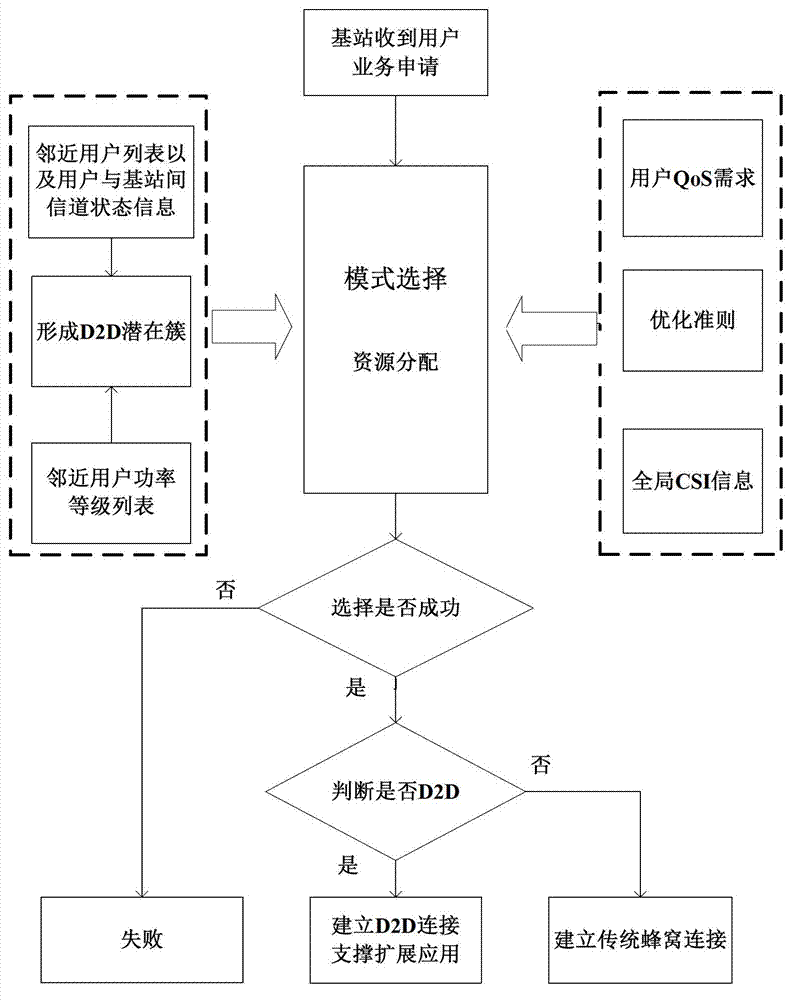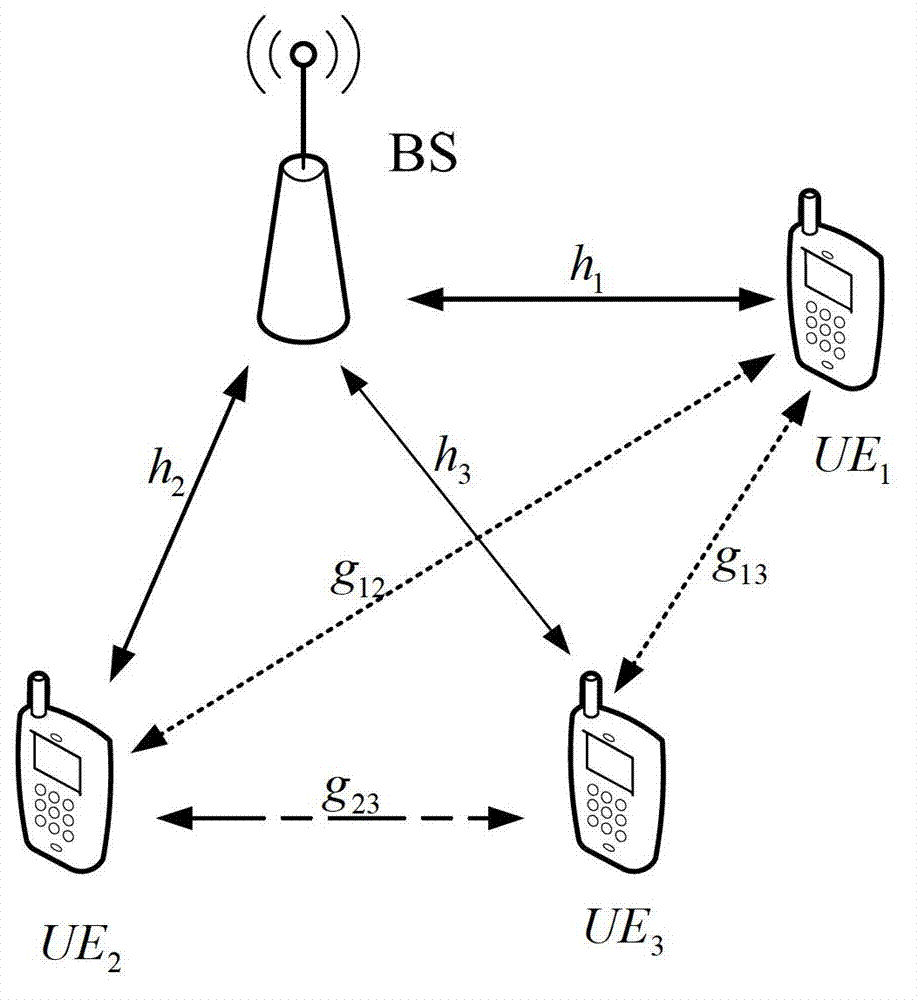Subsequent evolution embedded D2D(device-to-device) implementing method on basis of IMT-A (intelligent multimode terminal-advanced) standards
A technology of IMT-A and an implementation method, applied in the field of cellular networks, can solve problems such as unsatisfactory effects, and achieve the effects of long durability, improved spectrum utilization, and reduced energy consumption
- Summary
- Abstract
- Description
- Claims
- Application Information
AI Technical Summary
Problems solved by technology
Method used
Image
Examples
Embodiment Construction
[0051] Without loss of generality, the present invention is applied to an easy-to-understand network for illustration, and the transmission frame structure is as follows figure 2 As shown, the transmission frame is transmitted by the D2D user using the uplink resources of the cellular communication without significantly changing the structure of the original cellular communication transmission frame.
[0052] The network scene used in the present invention, such as image 3 shown. image 3 The three users are UE 1 、UE 2 and UE 3 , they are all within the coverage of the base station BS, at the current moment UE 1 、UE 2 and UE 3 Perform standard cellular communication with the base station, and at the next moment UE 2 with UE 3 There is a need for mutual communication. Order g ij , i=1,2,3; j=1,2,3 is UE i with UE j The channel gain between, h j ,j=1,2,3 is UE j Channel gain with base station BS, l j ,j=1,2,3 is the UE obtained by GPS j The location information...
PUM
 Login to View More
Login to View More Abstract
Description
Claims
Application Information
 Login to View More
Login to View More - R&D
- Intellectual Property
- Life Sciences
- Materials
- Tech Scout
- Unparalleled Data Quality
- Higher Quality Content
- 60% Fewer Hallucinations
Browse by: Latest US Patents, China's latest patents, Technical Efficacy Thesaurus, Application Domain, Technology Topic, Popular Technical Reports.
© 2025 PatSnap. All rights reserved.Legal|Privacy policy|Modern Slavery Act Transparency Statement|Sitemap|About US| Contact US: help@patsnap.com



